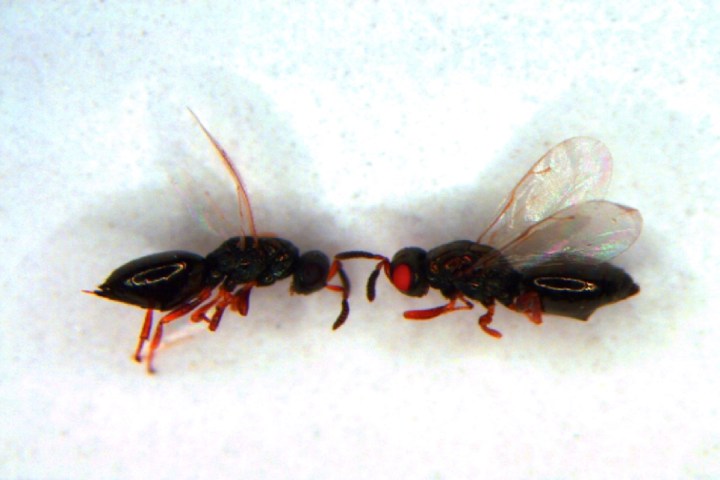
If the answer to that is a resounding “no,” then chances are that you don’t work in the University of California, Riverside’s Akbari lab. That’s because researchers at said lab recently introduced the world to a new strain of red-eyed mutant wasp — courtesy of its experiments with cutting edge CRISPR gene-splicing technology.
“We used CRISPR/Cas9 to generate mutations in the DNA of an important model organism, the parastoid wasp nasonia vitripennis,” Omar Akbari, the assistant professor of entomology who led the research, told Digital Trends. “This is exciting as it gives researchers a tool for the first time to mutate genes of interest, allowing researchers to study the interesting biology of this organism.”
As the research paper, published in the journal Nature, reveals, the red eyes were the result of injecting wasp eggs with the Cas9 DNA mixtures, and then transferring them back to the host. Because the modifications were made to the DNA itself, the red eyes are heritable — and will therefore be passed down to any and all offspring in the future.
But why make red-eyed mutant wasps at all? As it turns out, there’s a good reason for it — and it’s not that Akbari is a mad scientist who wants to hold the world for ransom with his swarm army of genetically engineered killer wasps. (Well, as far as we know it isn’t!)
“We wanted to test the efficiency of the CRISPR/Cas9 system using a phenotype that would be easy to visualize,” he said.
As to what’s next, Akbari said the plan is now to use the protocol for generating gene mutations to study a naturally existing selfish chromosome present in some wasp populations, called the paternal sex ratio disorder (PSR). “We hope to generate specific mutations in this chromosome to help understand the mechanism by which PSR acts,” he continued.
Ultimately, the goal is to find a way to better control wasps and other insects to help prevent them destroying crops and spreading diseases, such as malaria. Hey, if red-eyed wasps can help with that, then we’re all for it!


